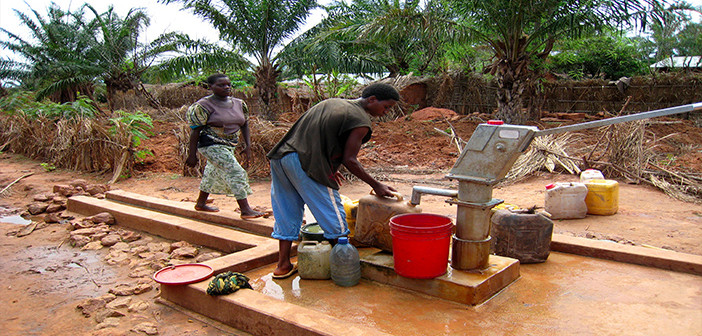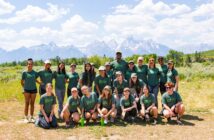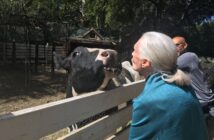Water is the most vital substance on our planet. It flows from rivers to oceans, irrigating farmland along the way, brings oxygen into the gills of fish, nourishes all living things and becomes breathable oxygen in the cells of plants.The water cycle determines the abundance of crops from year to year, the devastation of mudslides and hurricanes and the annual floods of wet seasons that ecosystems evolved to rely on over thousands of years. Water is a tiny polar molecule made of one hydrogen and two oxygen atoms – and it is the most valuable resource on Earth for humans, plants and animals. It is essential that we not only protect it, but ensure equal access to water, and its sanitation, for all. And that’s just what the UN SDG Goal 6 aims to do.
JGI has been working to promote this goal for some time with ongoing programs that create new wells and secure the sanitation and reliability of existing access to water in villages across central Africa. Our work to bring clean water to communities in need is especially integral to our work in the Congo Basin. In 2014 in the DRC, we installed one new water piping system while protecting three others, ensuring clean and potable water access to a total of over 6,000 villagers. Since contaminated water can lead to a variety of diseases, this improves the health prospects of the communities. It also improves the livelihoods of people who now have to walk a few hundred yards, rather than several miles, for clean water, freeing up time for other income-generating activities.
Our work to ensure clean access to water in the DRC, and to Tanzanian villages through TACARE, falls in line with Goal 6’s subgoal, to bring together global partners that will expand developing countries’ capacity to access clean water and sanitary living conditions. This includes improving water efficiency, waste water treatment and water harvesting.
JGI’s education and health programs bring incinerators and latrine systems with smart wastewater management to communities with new schools and health care clinics. And our environmental education campaigns provide farmers and livestock owners with the tools they need to use water, a precious natural resource, carefully and sustainably.
The other half of Goal 6 includes protecting and restoring water-related ecosystems by 2020. Since Dr. Goodall first stepped onto the shore of Lake Tanganyika to study wild chimpanzees, we have always been conscious of the importance of water in ecosystems. Through environmental education, we’ve helped to ease pressure from local fishers on Lake Tanganyika’s wildlife. And the Tchimpounga Chimpanzee Rehabilitation Center’s recent expansion to the edge of the Kouilou River in the Congo has prompted us to work harder than ever to ensure the health of forest rivers. JGI’s ongoing conservation work protects all chimpanzee and great ape habitat, not just the trees. This means that in our quest to protect 85 percent of chimpanzees and their habitat over the next 30 years, we are working to protect the river and lake water that allows them, and their human neighbors, to thrive.






